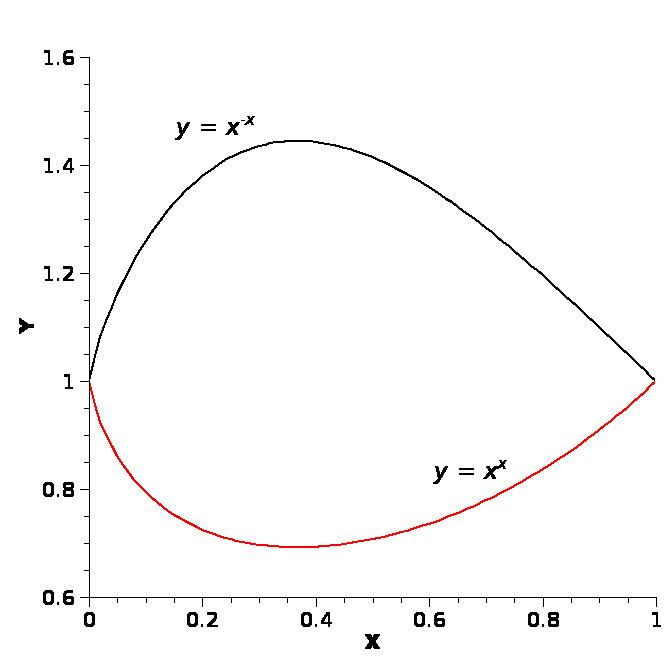 | ||
In mathematics, sophomore's dream is the pair of identities (especially the first)
Contents
discovered in 1697 by Johann Bernoulli.
The name "sophomore's dream", which appears in (Borwein, Bailey & Girgensohn 2004), is in contrast to the name "freshman's dream" which is given to the incorrect identity (x + y)n = xn + yn. The sophomore's dream has a similar too-good-to-be-true feel, but is true.
Proof
We prove the second identity; the first is completely analogous.
The key ingredients of the proof are:
Expand xx as
Therefore, we have :
By uniform convergence of the power series, we may interchange summation and integration
To evaluate the above integrals we perform the change of variable in the integral
By the well-known Euler's integral identity for the Gamma function
so that:
Summing these (and changing indexing so it starts at n = 1 instead of n = 0) yields the formula.
Historical proof
The original proof, given in Bernoulli (1697), and presented in modernized form in Dunham (2005), differs from the one above in how the termwise integral
The integration by parts proceeds as follows, varying the two exponents independently to obtain a recursion. An indefinite integral is computed initially, omitting the constant of integration
(also in the list of integrals of logarithmic functions). This reduces the power on the logarithm in the integrand by 1 (from
where (n) i denotes the falling factorial; there is a finite sum because the induction stops at 0, since n is an integer.
In this case m = n, and they are integers, so
Integrating from 0 to 1, all the terms vanish except the last term at 1, which yields:
From a modern point of view, this is (up to a scale factor) equivalent to computing Euler's integral identity for the Gamma function,
